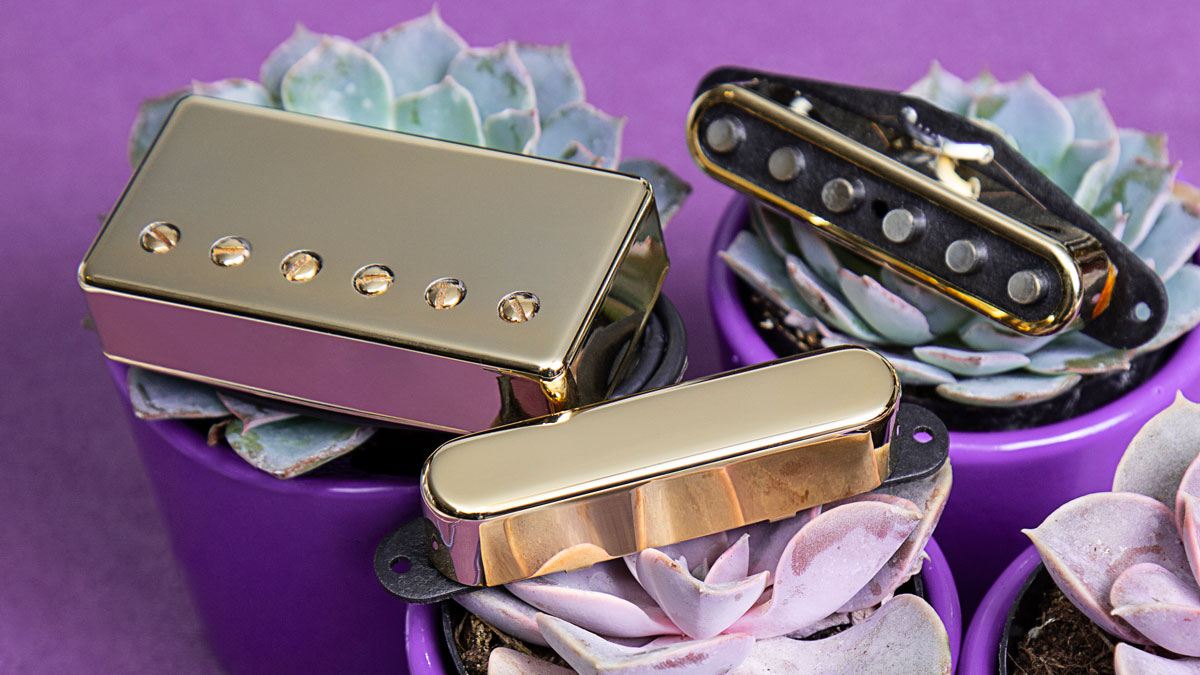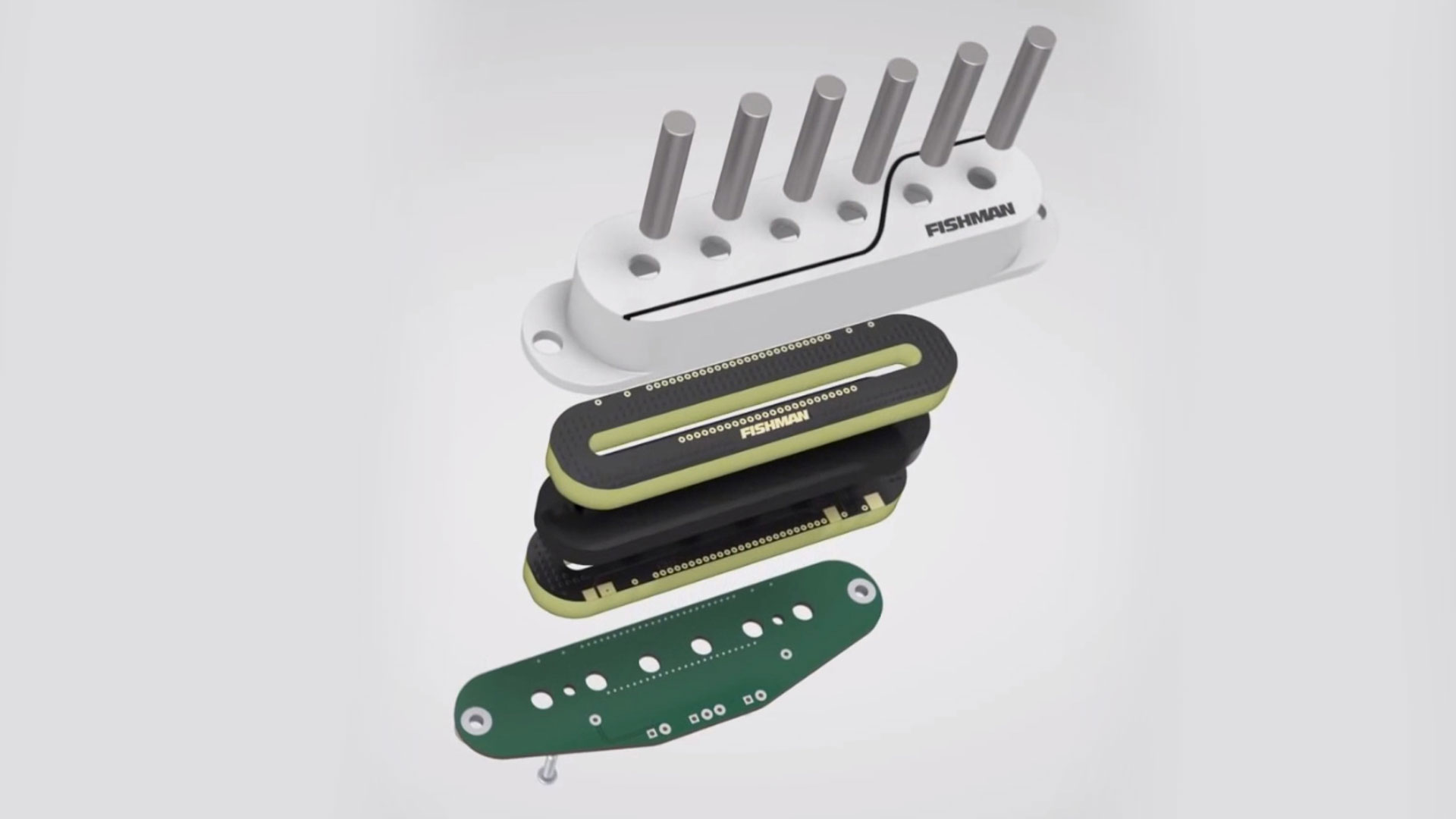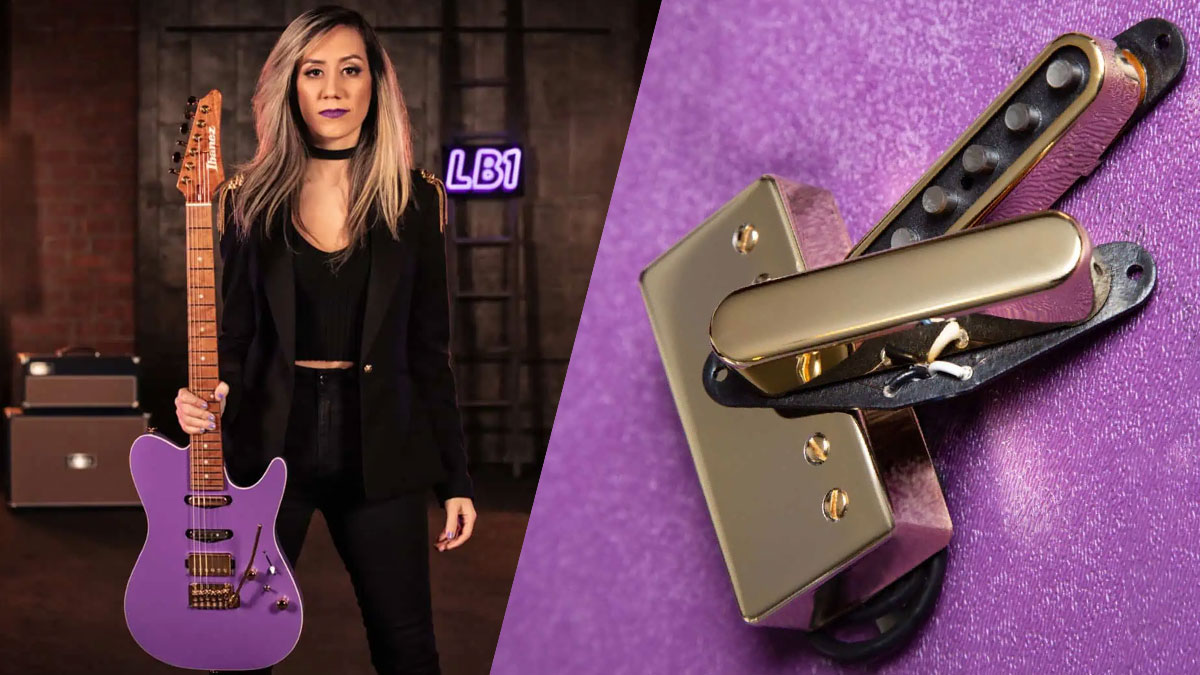
One of the most surprising trends at this year’s NAMM Show was just how many of the most exciting products announced around the event were… pickups.
In recent months, Fender has channeled sought-after CuNiFe magnets into single-coil and P-90 formats, with great results. Seymour Duncan, meanwhile, debuted the Hyper Switch, giving players the ability to digitally ‘rewire’ their electric guitar pickup configuration via Bluetooth at the touch of a screen.
Elsewhere, EMG took active pickups to the Jazzmaster, and L.R. Baggs – which has a solid history when it comes to improving plugged-in acoustic tone – debuted the HiFi. The latter is a pickup system that costs $199, can be installed on an acoustic with peel and stick pads – and somehow sounds ridiculously good for it.
Meanwhile, the signature pickup has become increasingly ubiquitous, with Rabea Maasaad’s Bare Knuckle Triptych Strat set turning heads, alongside new signature models for Joe Bonamassa, Lari Basilio, Polyphia’s Tim Henson and Scott LePage and Josh Smith, to name a small sample.
Our reporter on the NAMM show floor also returned with tales of packed-out pickup stands – a notion that would once have been laughed out the room.
One thing is clear: the attention of the retailers, influencers and other industry decision-makers is on all things pickup. So how did we get here?
Boom times for pickup makers
The answer is due to a combination of factors, namely: a change in the tech, an evolving economic context and shifting music-making habits.
A look at the history of pickup manufacturing will tell you that, for a very long time, very little changed. With a few exceptions – Wide Range humbuckers, active sets and, perhaps Hot Rails – we’ve essentially stuck to a ‘copper wire wrapped around magnets’ formula that hasn’t changed since the ‘50s.
Indeed, you could make a good case that the majority of industry R&D has gone into trying to recreate those original units, whether it is Gibson’s P-90s and PAFs, or Fender’s vintage single-coil sounds.

Recently, though – as evidenced at this year’s NAMM – there’s been an explosion in new options for pickup buyers.
“We’ve absolutely seen an increase in interest in pickups,” confirms Brian McDonald, VP of Sales and Marketing at pickup stalwarts, Seymour Duncan.
“Not just in overall sales, but the conversations with our customers across the various channels and the web analytics reveal an increase in research activity on SeymourDuncan.com, too. With bands getting out of the garage and back on the road, there’s an obvious opportunity there.”

A key development seems to have been the home recording/software boom and McDonald notes that “the proliferation of amp modeling seems to have created a ripple effect on everything in the signal path”.
What’s more, it has allowed players to hear themselves (and their pickups) in greater detail than ever before, giving them the chance to reflect on their tone and also driving a quest for noise-reducing units.
Advances in manufacturing, meanwhile, have enabled firms to cheaply tweak production lines and produce more experimental or signature products, while the ubiquity of affordable chip technology has opened up the possibility of genuinely new approaches to the pickup.
A leap forwards
In 2014, Fishman debuted the Fluence and Guitar World hailed it as “the first truly new electric guitar pickup system design in more than 80 years”. It marked a major technological step towards the boom we are now seeing.
The design uses tiny, precision-made coils that can be stacked and tuned to isolate frequencies, enabling the manufacturer to ‘voice’ the subsequent signal with far more intricacy and vastly reduced noise.
Using integrated chips, they can also route through different combinations of coils to create multiple voices from the same unit.
“[We knew] that if we were going to move into this product category, we needed a platform that would create a paradigm shift in pickup technology,” comments Chris DeMaria, VP of Marketing and Artist Relations at Fishman.
“Solving inherent issues with traditional pickup design, combined with multiple voices in one pickup, seems to have resonated with players – [particularly those] who’ve been searching for a solution that offered versatility and performance.”

Notably, Fluence seems to have struck a chord with heavy players, as pickup designs can be easily replicated for seven- and eight-string guitars and/or generate higher outputs, without compromising the unit’s tonal characteristics.
Traditional ‘overwound’ high-gain designs, in contrast, would often have to create a trade-off between certain frequency coverage and output.
“It goes back to creating solutions for players,” says DeMaria, when we note the proliferation of Fluence signature sets. “We’ve been able to sit in our studio with the artist and, in real time, create voicings that perfectly match the idealized sound they’re looking for. Once those voicings are created with the artist, we can then reproduce it consistently in our manufacturing process. There’s not a dud in the bunch.’’
DeMaria confirms that Fishman have also seen increasing pickup sales in recent years, suggesting the size of the overall market is growing, rather than simply trading brands.
Power to the players
It’s not just the manufacturers making the products who deserve the credit for the current boom, though. The economy revolves around supply and demand – and it’s the musicians themselves who have created the latter.
McDonald makes an important point – noting that it’s not simply about the pickups themselves, but players are considering how they will interact with other new tech, be it flat-response speakers, software modelers or high-gain amps.

“We’ve got a lot of young talent in our family – Lari Basilio, Josh Smith, Cory Wong, Mark Holcomb, Jared James Nichols, Wes Hauch and that’s just the signature artist side,” says McDonald. “Each of them will tell their story about what they were looking for. Strat tones in a Tele middle pickup, in Lari’s case. Something with more clarity for the Fractal rig, in Mark’s case.”
Basilio’s pickups are an interesting case in point, using traditional materials in a new combination, with Alnico V, IV and II magnets used in different positions to better balance the output from high to low strings.
DeMaria says he thinks players are also better educated these days. “There’s more information available online, in guitar media, and through social media,” says the Fishman VP.
“That has empowered players with knowledge and fueled their interest in exploring other pickup options. Players today seem to be able to better articulate their needs in terms of what they’re looking for in a pickup.”
We suspect the expanding tonal flexibility of modern pickups is also proving welcome with younger players, for whom genre and traditional listening habits have become largely irrelevant.

Pickup the bill
Perhaps the largest factor in the new pickup boom, though, is simply the economic reality of life in 2023.
Many new guitarists took up the instrument, or became invested, when they had a unique combination of spare cash and spare time as a result of the 2020 lockdown. Talk to any economic analyst about consumer spending habits now, though, and the headline point will be that we’re all poorer.
“I think the pandemic downtime inspired a lot of people to pursue guitar and the nuances of tone,” summarizes McDonald. “[Now] the new players that have stuck with it are diving into the tone-searching phase of their journey. A lot of players we talk to have inexpensive guitars that they like and want to upgrade rather than replace. [It’s a] classic use case, but on a larger scale.”
Most of us – musicians included – have felt the pinch of inflation and had to cut spending on non-essentials to make up for increased food and fuel prices. On top of that, guitar firms have also been forced to raise their prices due to increases in material and labor costs.
Boiling it all down: does the average player have a spare thousand dollars for a new guitar this year? Probably not.
As we commented after NAMM, much of the guitar-making industry does not seem to have caught up with the cost-of-living crisis, but consumers and retailers are taking things into their own hands, realizing the tonal variety on offer from lower-cost mods and pickup swaps.

McDonald says he’s looking forward to seeing how players use the firm’s new HyperSwitch, for example, noting even “around the [Seymour Duncan] office, no two players used it in the same way”.
At the same time, the Seymour Duncan VP maintains that the current boom is still inclusive of the more traditional options. “Something I keep front of mind,” he concludes, “is that there are players out there that haven’t yet experienced the tone and feel of the iconic pickups like the JB or Antiquities.”
Tradition and innovation in equal measure?
Clearly, the traditional formula isn’t going anywhere; instead, players now have a choice. DeMaria – perhaps surprisingly, given Fishman’s tech commitment – offers a similar sentiment:
There’s tradition, heritage and history and there’s innovation and technology that keep things looking forward. There’s obviously a place for both
Chris DeMaria
“Our industry straddles two worlds, and sometimes they can co-exist and sometimes not,” he says. “There’s tradition, heritage and history and there’s innovation and technology that keep things looking forward. There’s obviously a place for both.”
Nonetheless, he does offer a tantalizing glimpse into the future of Fluence. “I think in terms of what’s next, I imagine there’ll be more opportunities for customization – maybe just in colors and designs at first,” he posits.
“Hopefully [one day] we’ll get to a point where players can combine their favorite voicings from our entire range of pickups into their own custom Fluence pickup. Right now, the potential for Fluence seems limitless.”
Where will all this lead, then? Will it yield a new era of experimentation? Maybe. Will we see beautiful (not-yet-vintage) models carved up in the name of progress, as we did in the SuperStrat era? Probably. Will some ideas be consigned to the gimmick pile, alongside BetaMax and the Synth-Axe? Definitely.
One thing is for sure, though: in 2023, there are more pickups out there than ever before, and for the guitarist and gear nut that can only be a good thing.







